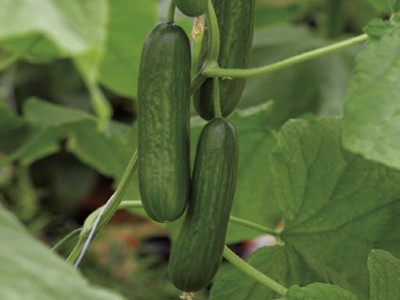The Best Crops to Grow in a Polytunnel

A polytunnel can really open up a world of growing possibilities, extending the growing season, providing extra shelter and increasing your chances of success with warm climate crops.
However, depending on the size of your polytunnel, you may want to maximise your space by choosing crops that perform optimally under cover or that can provide you with harvests into autumn and winter. Read on as we recommend some of the best vegetables to grow in a garden polytunnel.

1 - Tomatoes
You can grow tomatoes without a polytunnel, but it can be a struggle if you live in a temperate climate with a relatively short summer. The fact is that tomatoes need lots of light and warmth to grow to their full potential.
If the summer is a bit of a bummer, then outdoor tomatoes will sometimes fail to ripen; this is especially the case with larger varieties such as beefsteak tomatoes.
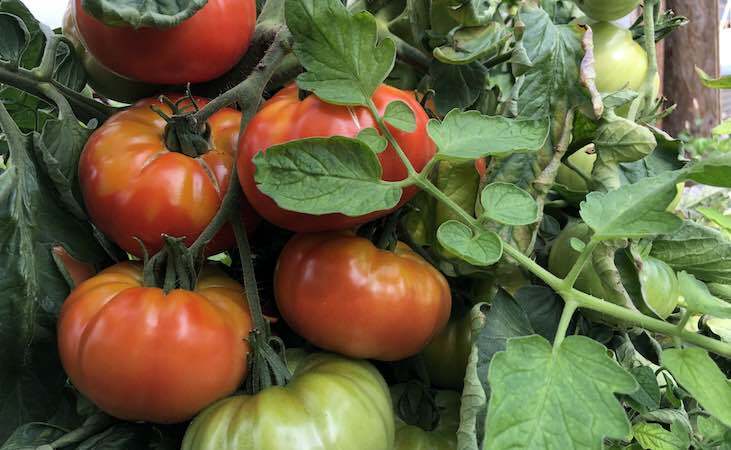
It stands to reason then that a newly constructed polytunnel is a perfect opportunity to reach for some tomato seeds, with fresh confidence that they’ll have enough time to fully mature. Tunnel-grown tomatoes are on a whole other level to the ones you can get in your local fruit and veg section.
There’s a whole lot of variety as well to keep things interesting. You could keep things simple in your first year, before ‘branching out’ with novel varieties like Yellow Brandywine, Marmande or Yellow Pear.

Tomato Yellow Pear
View ProductSow the seeds in modular trays and place in a heated propagator; temperatures of 22°C are ideal for germination. Pot them on to a larger 10 cm pot when you see a third leaf forming. Tomato seedlings need plenty of light to prevent them getting ‘leggy’ (or tall and spindly). Transplant into their final position when the plant has reached about 15cm high; otherwise they can become potbound.
One key thing to be aware of is ventilation, as tomato blight can spread quickly in humid conditions. If you do see signs of blight (brown marks on leaves which grow quickly in size), you can save the day by removing the infected parts, disposing of them and (to make extra sure) spraying the rest of the plant with a mixture of sodium bicarbonate and water.

When to Sow: late February to mid March
Harvesting: July to August
2 - Peppers
Peppers are a bit of a gamble if grown outdoors in our temperate climate. They thrive in warm, stable conditions and require a long growing season, so a polytunnel (or greenhouse) can be a real game changer here. There are a range of options to choose from, whether you opt for sweet peppers, chilli peppers or lunchbox snacking types.
Peppers are one of those crops that you want to be sowing as early as you can. February is ideal in the polytunnel, with mid March the latest you’re advised to leave it. The idea is that they should be ready to transplant into larger pots when the weather starts warming, and ready for harvesting before the weather starts cooling.

Chilli Pepper 'Habanero Orange'
View ProductStart the seeds off in modules using a good quality, fine seed compost (such as Klasmann). A heat mat or propagator is ideal to ensure warm enough conditions for successful germination; they will need a temperature of at least 20°C. Cover the seeds lightly with a layer of vermiculite, which holds onto moisture and creates air spaces, giving a better germination rate.
In general, pepper plants are ready for transplanting when they reach 10-15cm tall. Pot on to 12 cm pots, and when doing so plant them with the stems buried up to the first set of leaves: this will strengthen the plant and encourage a good root system. Optimal daytime temperature should be between 20-30°C, and nighttime temperatures should not dip below 10°C.

Small Vitopod Electric Propagator Single or Double Height
View ProductDepending on the variety, the plant might need some support in the form of stakes or string as it grows taller. Peppers can be picked when they’re green, but can also be left to further ripen (turning yellow or red): the latter is desirable, as a longer ripening period enhances flavour, sweetness, and nutritional value.
It’s also worth noting that chilli peppers will ripen quicker than sweet peppers, and although they are small they will crop prolifically.
When to Sow: February to mid-March
Harvesting: July to October

3 - Sweetcorn
Sweetcorn can be grown outdoors but it will need plenty of warmth. The polytunnel environment increases your chances of a tasty harvest. If you have a north or north western garden (in Ireland or the UK), covered growing is almost essential.
Start sweetcorn in modules, and keep a keen eye on them: in warm conditions they can grow very fast.
One important thing to note is that sweetcorn is wind-pollinated. In the enclosed, sheltered environment of the polytunnel, you may well need to hand-pollinate. This can be done by gently shaking the plants or by using a soft brush to transfer pollen from the tassels to the silks. Growing your sweetcorn in blocks (rather than rows) can also improve pollination rates.
If you are sowing more than one variety of sweetcorn, it may be better to leave 3 weeks between sowing - as cross pollination can affect the sweetness & number of kernels.

Seedlings can be transplanted from modules or pots when they are around 10-15 cm tall. At this stage, make sure to space them at least 40 cm apart.
Tip: sweetcorn is a crop that can take up a fair bit of space in a tunnel. To maximise space efficiency, you can sow climbing beans at the base of the plant (do this when it’s grown about 30cm high) and interplant with squash (this is known as the ‘Three Sisters’ method).
When to Sow: April to May
Harvesting: August to October

4 - Aubergine
Originating from the Tropics, aubergine is naturally another crop that needs a good long growing season with plenty of warmth.
Growing conditions in the tunnel are similar to those for fellow nightshades tomatoes and peppers. Sow seeds in a heated propagator at temperatures of around 20-25°C. Once seedlings develop their first true leaves, pot them on into larger containers.

Black Beauty Aubergine Seeds
View ProductKeep plants at temperatures between 16-18°C. When transplanting into their final position, ensure they have at least 45 cm spacing between each plant.
Once the plants start flowering, feed weekly with a potassium-rich plant feed - which will encourage good flavour and fruit formation. Harvest when they are ‘glossy’ and firm to the touch.
When to Sow: February to mid March
Harvesting: July to September
5 - Cucumbers
Homegrown cucumbers are a class above the ones you find in the shops, and will thrive in the protected polytunnel environment.

There are two main types of cucumber: the more rough-textured ‘ridge’ cucumber varieties and greenhouse cucumbers. The former are more suited to outdoor growing, whereas the latter - as you can guess from the name - will need the protection of an indoor growing environment.
In general, cucumber is a tender plant that requires heat and humidity, and is susceptible to frost.

Cucumber 'Passandra F1'
View ProductThe good news is that greenhouse types are pretty easy to grow, and will reward you with abundant yields of juicy, hydrating goodness. The three key things you need to provide them with are heat, moisture and nutrients.
Keep temperatures in the area between 18 and 25ºC. During spells of hot weather you may need to pay attention to ventilation, while you can increase humidity by ‘damping down’ or by spraying a fine mist. Water plants regularly; this is all the more important when they are flowering or fruiting.
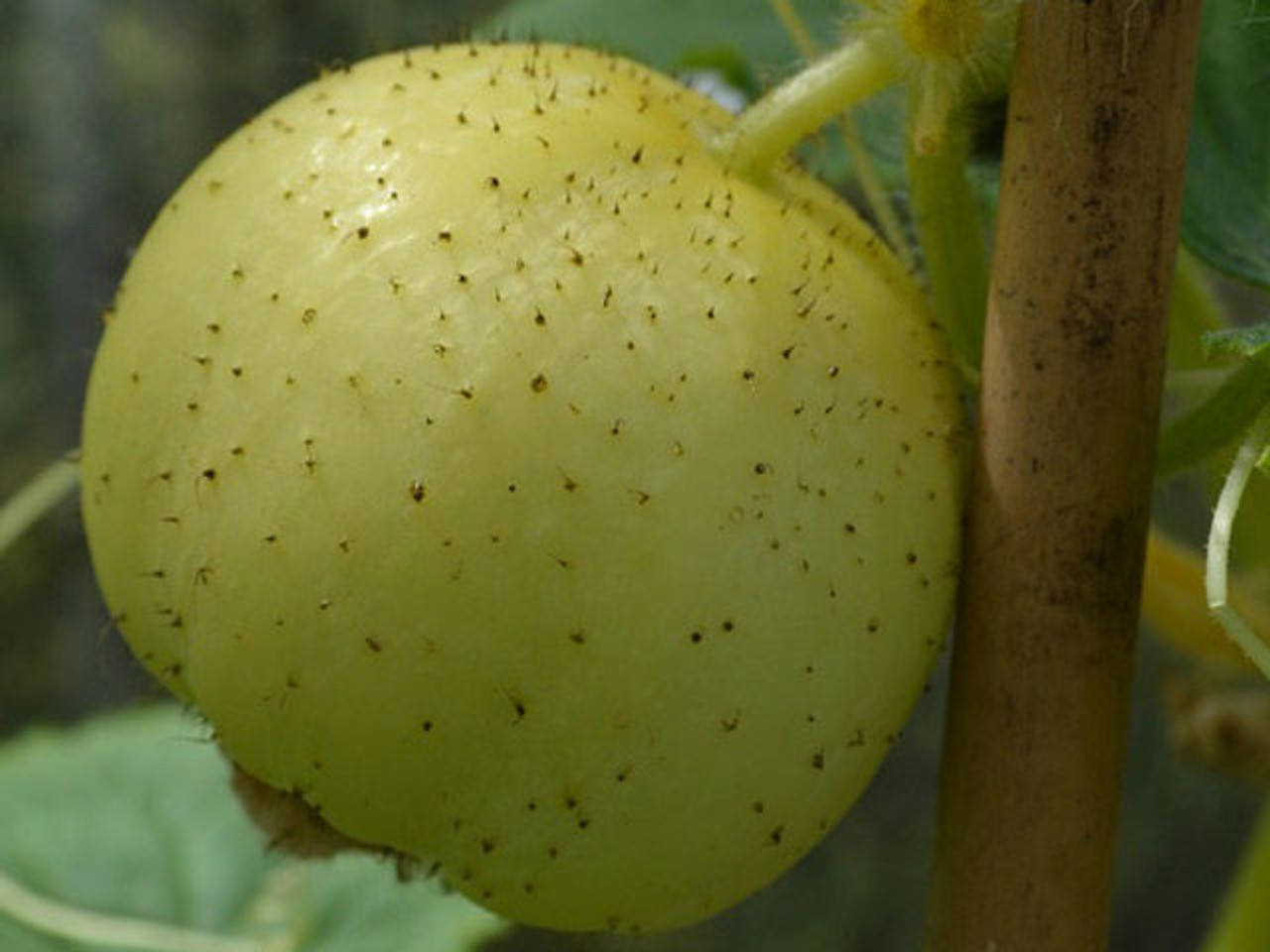
Cucumber Crystal Lemon
View ProductCucumbers don’t require pollination and male flowers should be removed to discourage this from happening, as otherwise the fruits can end up tasting very bitter. Modern F1 cucumber varieties tend to be all female, but some of the older - and still popular - varieties will feature both male and female flowers.
Encourage cucumber plants to grow vertically along cane, string or trellis; this will save space in your tunnel and is what the plant naturally likes to do. Make sure the support is robust enough to support the weight of a plant that will likely have multiple fruits when mature.

When to Sow: late March to May
Harvesting: June to September
6 - Climbing French Bean
With climbing French bean varieties you can make smart use of vertical space in a polytunnel, increasing your overall crop output. They are a prolific crop with a long season.

You can sow in early April as long as you have a heat of 20˚C for germination, and are ready to protect plants from cold once they come up. Sow 1 seed per cell in a 5cm module, and plant out in the tunnel beds 2-3 weeks later. Provide sturdy supports such as bamboo canes or netting, as these plants will quickly grow upwards.
French beans love plenty of moisture, warmth and shelter, and in a polytunnel environment it won’t be long before you see them shooting up their supports.
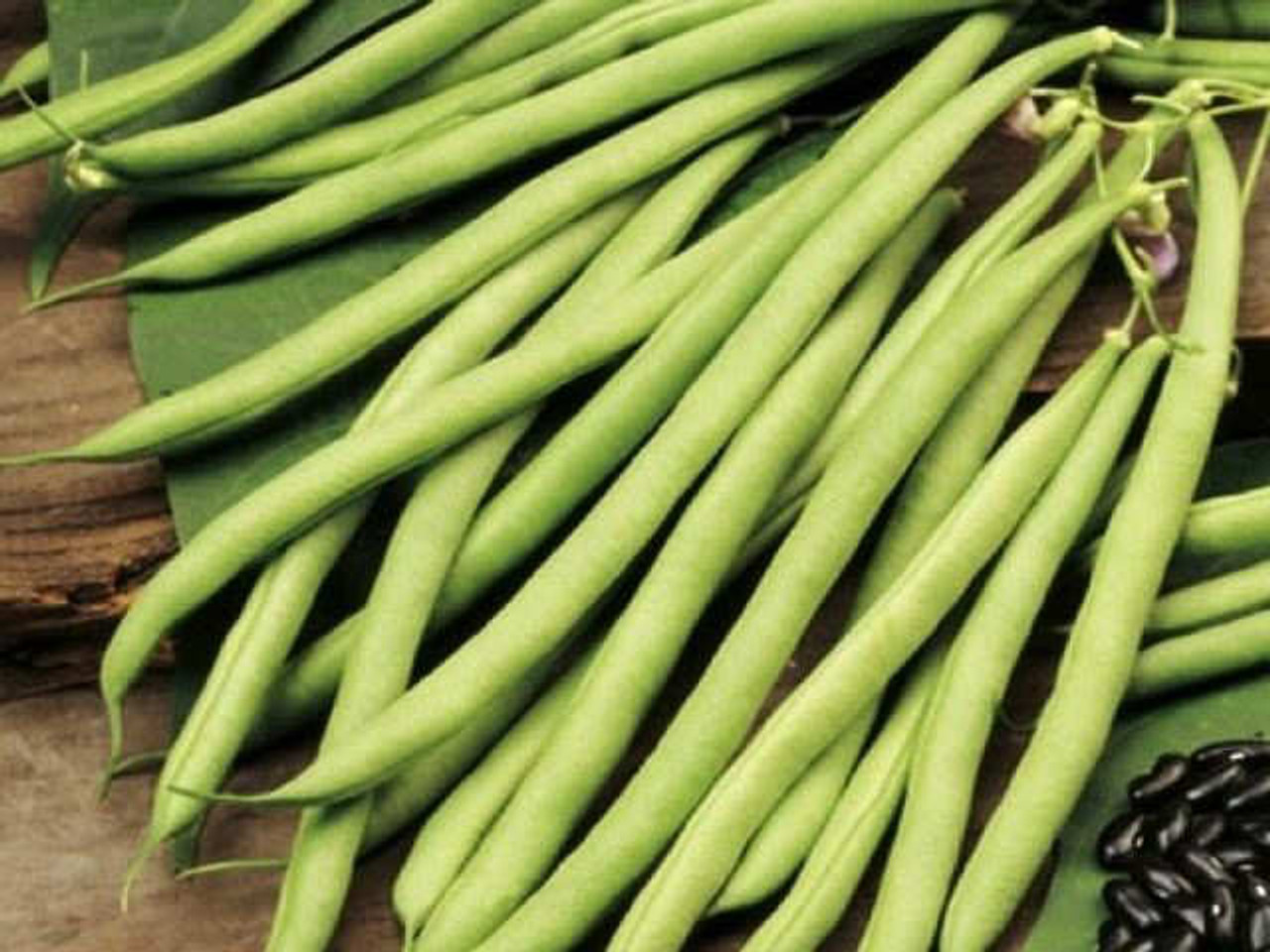
Bean, French Climbing 'Cobra'
View ProductOne thing you should be aware of though is that they don't like it really hot (above 35˚C), so a shade cloth may be needed in midsummer to help keep temperatures down. Whether this is an issue for you may be influenced by where you are in the country and how warm your garden gets in a typical summer.
Beans should be harvested when they are young and tender. Leaving them on the vine a bit too long can result in tough, stringy pods. Regular pod picking encourages continuous production and successive harvests.
When to Sow: mid April to June
Harvesting: from June onwards (for April sowings)
7 - Potatoes
While potatoes are typically grown outdoors, polytunnel owners can be harvesting them much earlier in the year than usual.
Potatoes do take up a lot of space, so whether you want to take up valuable real estate with them can depend on how big or small your tunnel is. If you plant them in January they will be in there until late April, when you will likely need space for other crops in March.
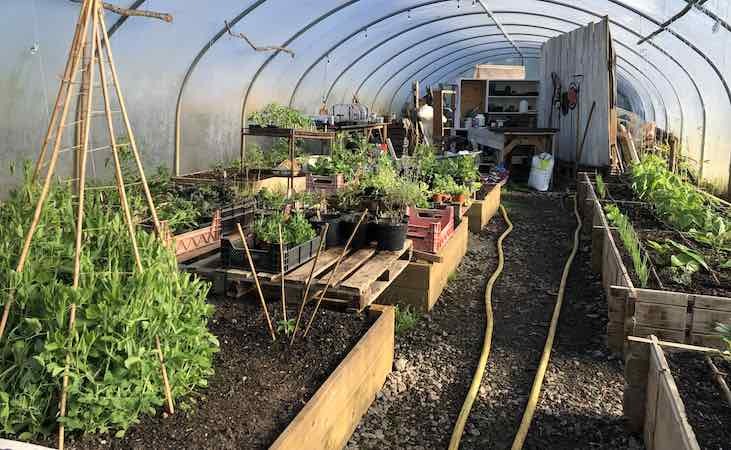
Those concerns out of the way; if the idea of fresh springtime potatoes appeals to you, you can start ‘chitting’ the tubers in early January (a fun new year project) before planting at the end of the month or in February.
The shelter of the polytunnel will allow you to get 4-6 weeks ahead of early potatoes planted outdoors. You should have some horticultural fleece on standby, as potatoes are frost tender.

Ensure that potatoes are planted in fertile soil; add organic matter or well-rotted manure a couple of months in advance of planting.
You should also water them plenty in their later stages of growth, as remember: it doesn’t rain in a polytunnel!
When to Sow: January to February (chitted early varieties)
Harvesting: late April onwards

8 - Asian Greens
When the year moves into autumn and space opens up in the polytunnel, Asian greens are an excellent choice to keep things humming along.
This refers to a range of leafy salads which are commonly found in Asian grocery stores but have rapidly gained popularity in recent times. Examples include Mizuna, Pak Choi or mustard greens.

Pak Choi 'Joi Choi F1' - Asian Brassica
View ProductAsian salads are fast-growing, nutritious and often distinctive in taste. They do well in cooler conditions, and with the extra shelter of a polytunnel you can be harvesting fresh leaves well into the winter.
Regular ‘cut and come again’ harvesting of leaves will encourage further growth, as well as giving you something to do when seasonal activity calms down a bit! Baby leaves are ideal for salads, while more mature leaves can be steamed or used in stir fries.

Asian greens (or oriental salads as they’re sometimes called) can be sown direct into soil in the tunnel, but you can also use modular trays and sow 4-5 seeds per cell.
When to Sow: August to October or January to March
Harvesting: Cut and come again

9 - Chard/Perpetual Spinach
Two more great options for indoor growing later in the year are chard or the closely related perpetual spinach.
Chard (or Swiss Chard) is a leafy vegetable that belongs to the same family as beetroot; however it is grown for its leaves and stems rather than its root. Chard encompasses some very colourful varieties (such as the appropriately-named ‘Rainbow Chard’).

Chard 'Rainbow Chard'
View ProductOne sowing of Chard in late August can give you successive cut-and-come-again harvests into winter. Although growth will slow to a halt at the tail end of the year, the plant can be overwintered and will pick up again in February.
Perpetual spinach is a type of chard that can serve as an alternative to ‘true spinach’ (the spinach that you will be most familiar with). It has a number of advantages over true spinach when it comes to indoor growing: it’s hardier, not prone to bolting in warmer weather, and it can be harvested continuously for months - providing a steady supply of leaves into November.

'Perpetual Spinach'
View ProductTaste-wise, perpetual spinach has a milder, earthier quality compared to true spinach, with thicker, fleshier leaves. It’s perhaps more suited to soups and stews as opposed to the more tender spinach leaves which can be eaten raw and added to sandwiches.
When to Sow:
Chard: late August
Perpetual Spinach: August to September (or April to May)
Harvesting: continuous

10 - Carrots
Early carrot varieties such as Nantes or Amsterdam Forcing are ideal for sowing in the polytunnel from late January or February. In general, early carrots are smaller, tender and more delicate tasting than ‘maincrop’ varieties.
While they don’t store as well as maincrop carrots, these early options are fast-growing, with 8-12 weeks between sowing and harvest. You can also choose to harvest varieties like Nantes earlier still as baby carrots, or alternatively leave them in the ground to mature.

Early Carrot 'Amsterdam Forcing'
View ProductOne added bonus is that early carrots sown indoors will have an extra measure of protection against carrot root fly, which can be a bit of a scourge when it comes to outdoor growing.
Sow thinly in drills; your growing medium should be light and well-drained. Gently rake soil over the rows and then water well.
Carrots need a minimum soil temperature of 10˚C to germinate. If sowing very early crops, covering beds with fleece, a clear cloche or a mini polytunnel for 2 weeks before sowing will help warm the soil. Draping some mesh loosely over your crops can also protect against carrot root fly, and fleece can be useful for when the weather is colder.
When to Sow: late January/February to April
Harvesting: May onwards
Honourable Mentions:
Aparagus, Garlic, Kohlrabi, Basil, Radish (Daikon, winter radishes)




